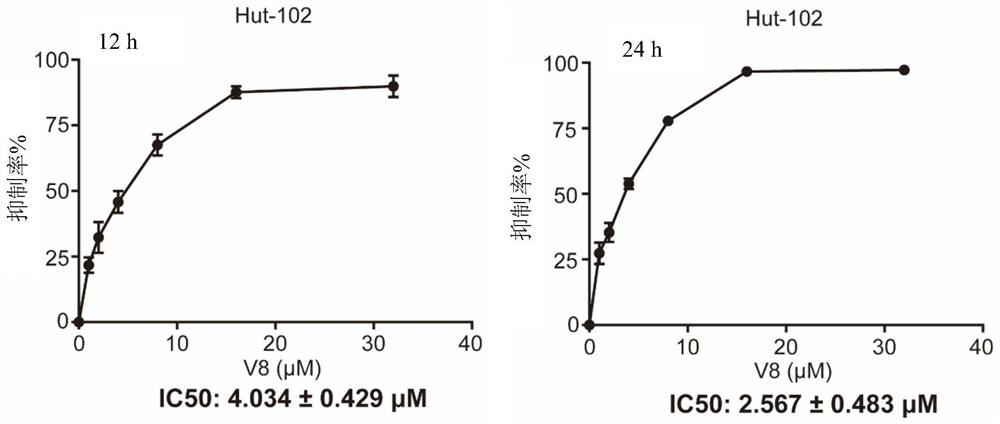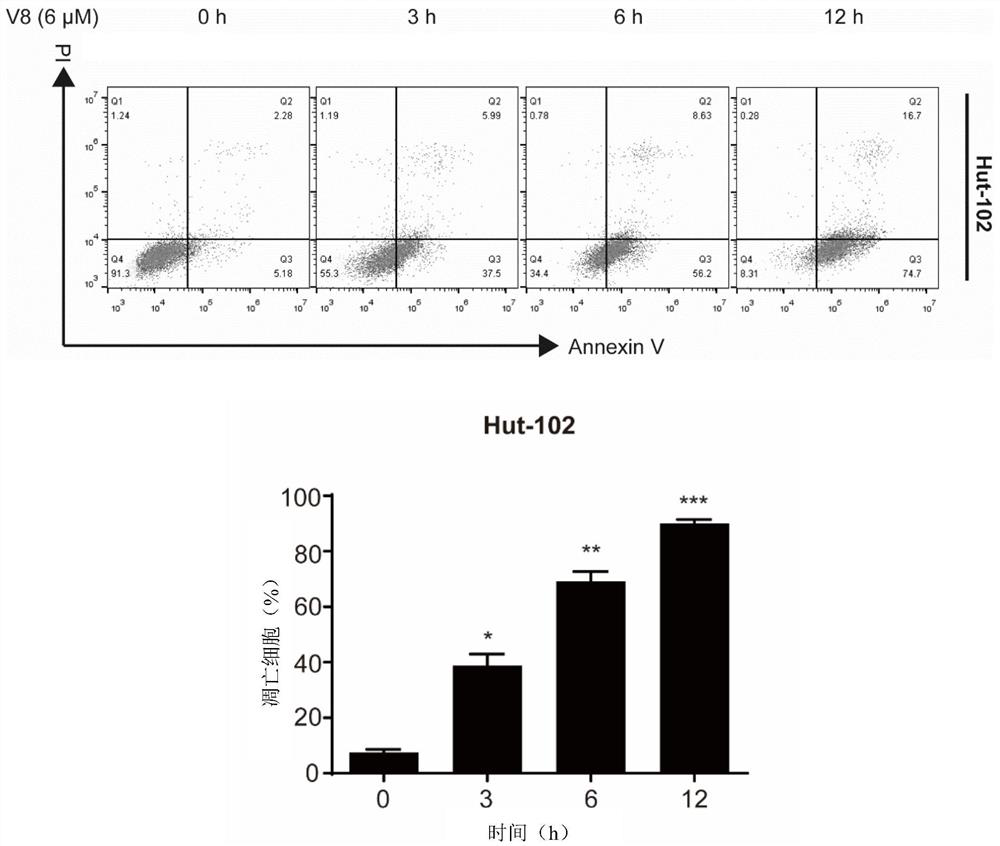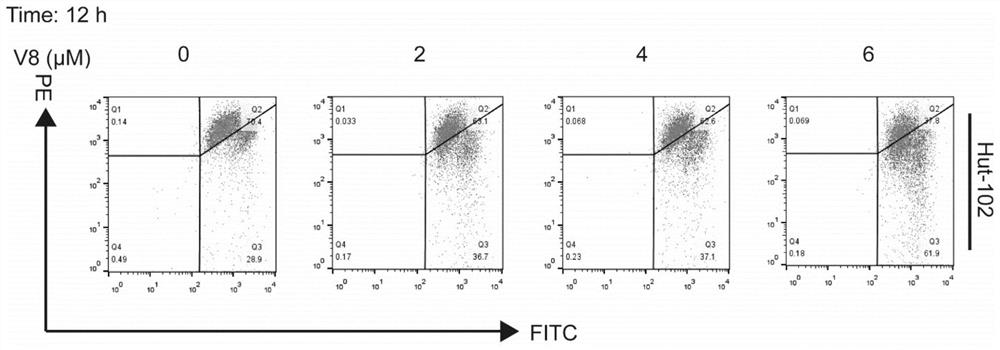Application of flavonoid derivative CPU-008 in preparation of anti-lymphoma medicine
A CPU-008, lymphoma technology, applied in the field of anti-tumor drugs, can solve the problems of patients with toxic side effects, easy metastasis of lymphoma cells, affecting treatment compliance and efficacy, etc.
- Summary
- Abstract
- Description
- Claims
- Application Information
AI Technical Summary
Problems solved by technology
Method used
Image
Examples
Embodiment 1
[0041] Example 1 Inhibition of CPU-008 on TCL cell line Hut-102 cell viability
[0043] CCK-8 is a highly sensitive kit based on water-soluble tetrazolium salt (WST-8), which is commonly used to detect cell proliferation. The principle of action is that WST-8 can be reduced by dehydrogenase in mitochondria to generate orange-yellow formazan dye in the presence of electron coupling reagents. Using a microplate reader to measure its OD value at a wavelength of 450nm, the number of living cells can be dynamically quantified through colorimetry, thereby indirectly reflecting the number of living cells.
[0044] The human TCL cell line Hut-102 in the logarithmic growth phase was cultured in a 96-well microtiter plate according to a certain cell density. After culturing in the incubator for 12 and 24 hours, 20 μL of CCK-8 solution was added to each well. After further incubation for 1 h, the absorbance was detected at a wavelength of 450 nM using a m...
Embodiment 2
[0049] Example 2 CPU-008 induces apoptosis of AML and TCL cells
[0050] Apoptosis detection
[0051]Annexin V / PI double staining was used to detect cell apoptosis. In normal cells, phosphatidylserine (Phosphatidylserine, PS) is distributed inside the phospholipid bilayer of the cell membrane. During apoptosis, PS is exposed to bind with Annexin V. Cells in the early stage of apoptosis will only have the phenomenon of PS eversion, and PI dyes cannot penetrate the cell membranes of cells in the early stage of apoptosis and normal cells, so the cells in the early stage of apoptosis are in the lower right area (Annexin V+, PI-) in flow cytometry; In late apoptotic cells, DNA is stained because PI can enter the nucleus through the cell membrane, which is located in the upper right part (Annexin V+, PI+). Collect K562 and KU-812 cells treated with different concentrations of drugs, centrifuge to remove the supernatant, wash once with PBS, resuspend the cells in 100 μL Binding bu...
Embodiment 3
[0054] Example 3 Effect of CPU-008 on Mitochondrial Membrane Potential of Human TCL Cell Line Hut-102 Cells
[0055] Determination of mitochondrial membrane potential
[0056] JC-1, also known as CBIC2(3) or 5,5′,6,6′-tetrachloro-1,1′,3,3′-tetraethylbenzimidazole carbocyanine iodide, is a cationic lipid It is an ideal fluorescent probe for indicating mitochondrial membrane potential (△Ψm). When △Ψm is high, JC-1 gathers in the mitochondrial matrix to form a polymer, which can produce red fluorescence; when △Ψm is low, JC-1 cannot gather in the mitochondrial matrix, at this time JC-1 is Monomer, can produce green fluorescence. In this way, it is very convenient to detect the change of mitochondrial membrane potential through the transition of fluorescent color. The relative ratio of red-green fluorescence is commonly used to measure the ratio of mitochondrial depolarization.
[0057] Hut-102 in the logarithmic growth phase was cultured in a 6-well cell culture plate accordi...
PUM
 Login to View More
Login to View More Abstract
Description
Claims
Application Information
 Login to View More
Login to View More - Generate Ideas
- Intellectual Property
- Life Sciences
- Materials
- Tech Scout
- Unparalleled Data Quality
- Higher Quality Content
- 60% Fewer Hallucinations
Browse by: Latest US Patents, China's latest patents, Technical Efficacy Thesaurus, Application Domain, Technology Topic, Popular Technical Reports.
© 2025 PatSnap. All rights reserved.Legal|Privacy policy|Modern Slavery Act Transparency Statement|Sitemap|About US| Contact US: help@patsnap.com



